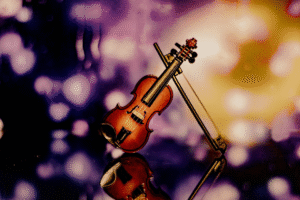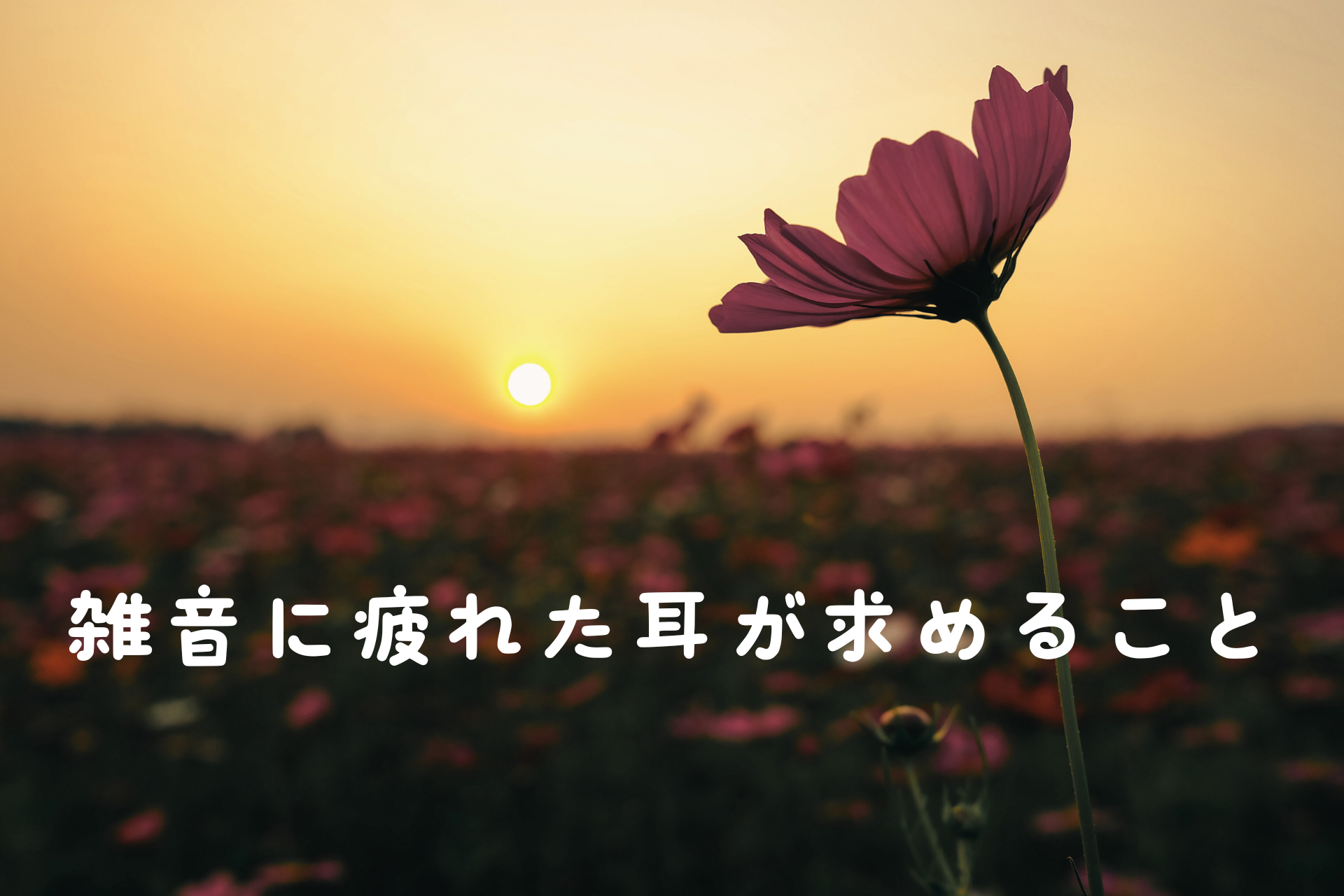心地よい音と嫌な音を聴き比べる耳
私には、少し苦手な音があります。
それは、大きな声の会話です。
全ての大きな声は嫌なのか、というとそうではなく、声が大きくてもさほど気にならない場合もあります。
この違いは一体なんなのかはわかりません。
なので外に出るとどうしてもいろんな音が耳に入ってきて、すごく疲れてしまいます。
自分には関係がない会話の内容だし、無視すればいいのですが、どうしても耳が拾ってしまい、頭の中が忙しくなり、その日はほぼ沈んでしまいます。
心地よく聞こえる声とそうでない声があるというのは、なんとも失礼な話なのですが。
なので必要以外、外出はしないことにしています。
音楽を深く聴き分ける力

音楽も同じで、オーケストラの楽器の微妙なピッチのズレなどにはすぐ気づく・・
これは音楽に携わる者としてはある意味長所ですが、ピッチに無頓着な人と一緒に演奏すると、精神がすり減ってしまうのです。
良い面もあるというのは、音の空間的な広がりやリズムのわずかな揺れ、テンポ感など、瞬時に聞き分け、それを自分の音楽にも取り入れることができる。
たとえば、同じテンポ60で演奏しても、あるピアニストの演奏はどっしりとした印象を与え、別のピアニストの演奏は軽やかに感じることもあります。
テンポが同じでも、ピアニストの個性で演奏は全く違いますね。
こうした違いを見分ける力や聞き分ける力があると、さらに深掘ることができるでしょう。
ここで言いたかったのは、細かい音を聴き分ける力は音楽をする上でとても重要だということです。
残念ながら、この力は努力だけで得られるものではないことが多いのですが。
スマホの音は頭で聴いている?

スマホのスピーカーで直接聴く音。
私はこれがとても苦手です。
耳で聴いている感覚ではなく、直接頭に音が入っていく感じ。
だから必ず、Bluetoothに繋いで音楽などを聴くことにしています。
静かな時間を大事にしたい
夜、犬の散歩をしていると、こおろぎの声がよく聞こえてきます。
犬はどこから音がするのかとピンと耳を立て、空を見上げたりもします。
その姿を見ていると、人間と犬では周波数の感じ方が違うのだろうなとちょっと不思議。
自然の音は、不思議と疲れないですね。
むしろ心が落ち着き、頭が整理されていくような感じです。
一方で、生活の中に常に大きな声や、嫌だなと思う音楽ばかりが流れていると、それだけでストレスが溜まってしまう。だから意識的に無音や静かな環境をつくることが大切かもしれません。
自分の音楽も、誰かにとって心地よいものであればいいなと思います。
そして、耳が疲れた日のもうひとつの救いは、沖縄の独特な音階が持つやさしい響き。
心をゆるめてくれるあの音の理由については、「沖縄の音階(琉球音階)から生まれた癒しの音、オリジナル小曲と楽譜付き」にまとめてあります。
English Version/Quiet Sounds and a Sensitive Ear
There are some sounds I find hard to be around —
especially loud conversations.
It’s not just about volume.
Some voices feel gentle even when they’re loud,
while others quietly drain my energy.
I don’t know why, but too many sounds make my mind tired.
In music, I can hear even the smallest pitch or timing differences.
That sensitivity helps me create,
but sometimes it wears me down when others don’t notice them.
At the same time, it lets me feel space, rhythm,
and the subtle character of each performer.
Even with the same tempo, every pianist sounds different.
Smartphone speakers are also hard for me —
it feels like the sound goes straight into my head.
So I always listen through Bluetooth,
giving the sound room to breathe.
At night, walking my dog,
I hear crickets and soft natural sounds.
They never tire me.
Instead, they calm my mind
and remind me why I cherish quiet time
—to rest my ears and create gentle, living music.




コメント